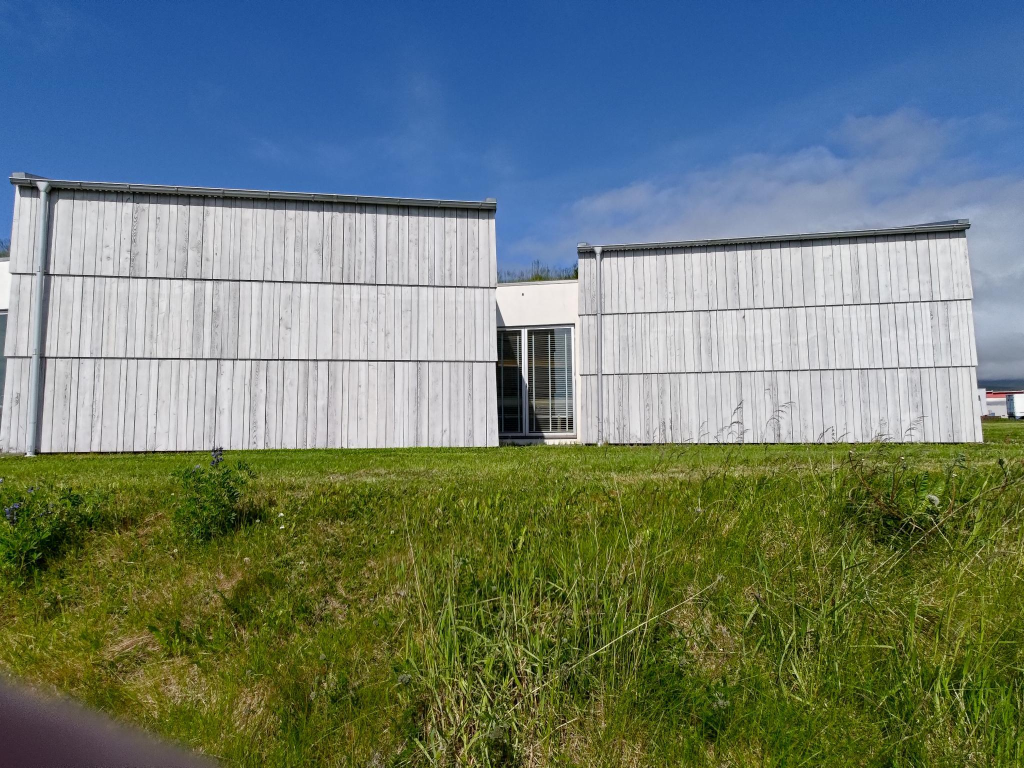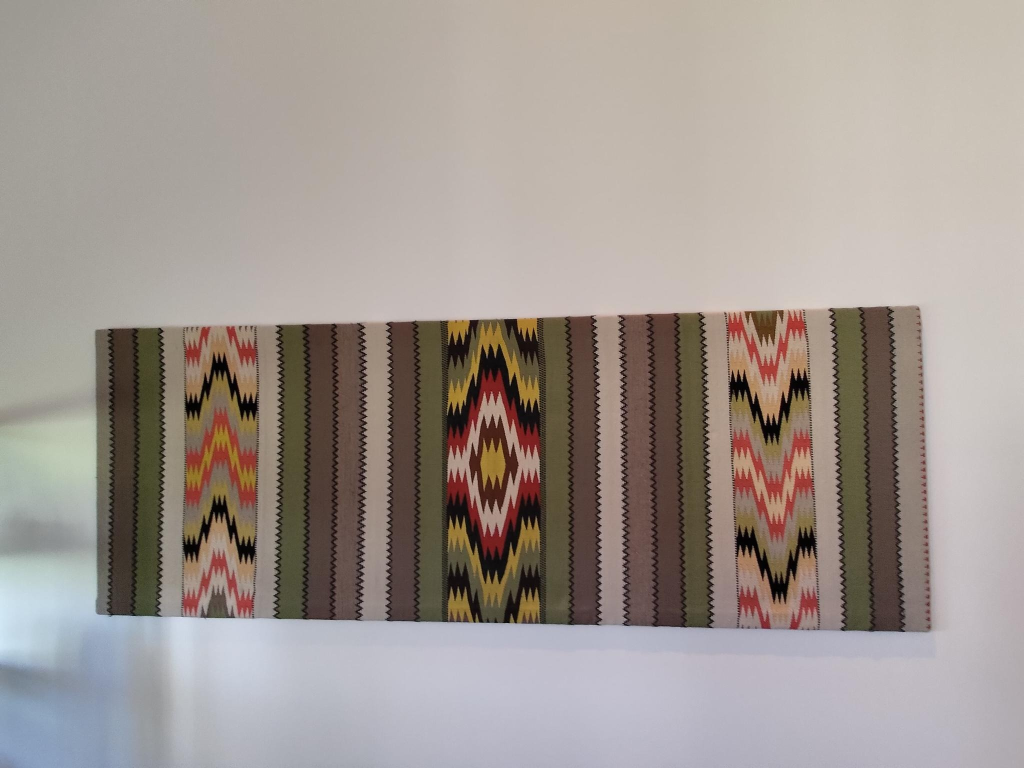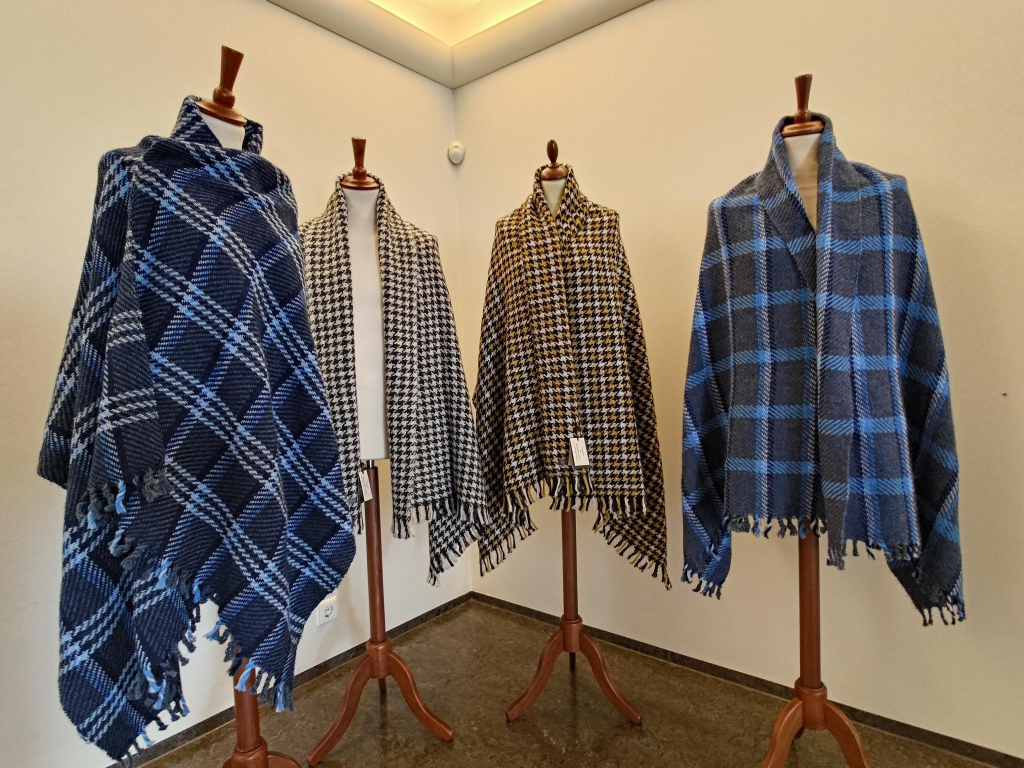After eating dinner at a Macadonian run B & S Restaurant, we needed to walk off our meals, walking along the banks of the Blanda River in Blönduós, Iceland. We stopped to admire a modern building with a sod roof, and unusual siding.

At the mouth of the river, we walked away from the river for a block. Then we walked along a street, one block from the river, on the way back. Here we encountered the Icelandic Textile Centre, a research institution, and the Icelandic Textile Museum. It was in the same building that we had appreciated previously.

The museum was officially opened at the centennial of Blönduós in 1976, and has been a private foundation since 1993. In 1976 the museum was in a small and narrow building, a former stable of the Women’s School (Kvennaskólinn) in Blönduós. Construction of a new building was started in 2001-10. It was designed by the architect Guðrún Jónsdóttir. It occupies about 250 m2, integrated with the old building. This new building was opened 2003-05-09.
I liked the modernist design of the Textile Museum, and felt that the architecture contrasted with the textiles. The underlying theme of all exhibitions at the museum is the Þráður = thread. The thread is the basis for all textile crafts and connects the past with the present, and the future.
Halldóra Bjarnadóttir (1873-1981), made significant contributions to the museum. She was employed by the National Farmers Union in Iceland and published the „Hlín” magazine for 44 years. Moreover, she founded and operated the Wool- and Textile College at Svalbarði in South-Þingeyjarsýsla. Halldóra dedicated herself to the social and educational affairs of women and was an eager representative of their culture. She collected varieties of weaving and knit patterns as well as many types of small objects related to wool- and textile processing. Many sources point out that she never married, and did not have children.
I had an interesting conversation with a young woman employee at the museum. She explained that Icelandic national costumes are not owned by any individual, but by a family. One person, usually an older woman, is usually responsible for the garment(s). It is considered an honour to have this position. People may ask to wear one or more parts or all of a national costume for various events.
I asked her about male costumes. She could show me photographs, but not the garments. They were not well enough kept to put on display, she said.


A life in Blönduós would offer people an opportunity to pursue the study of (Icelandic) textiles in depth, and an opportunity to meet others with the same interest.


